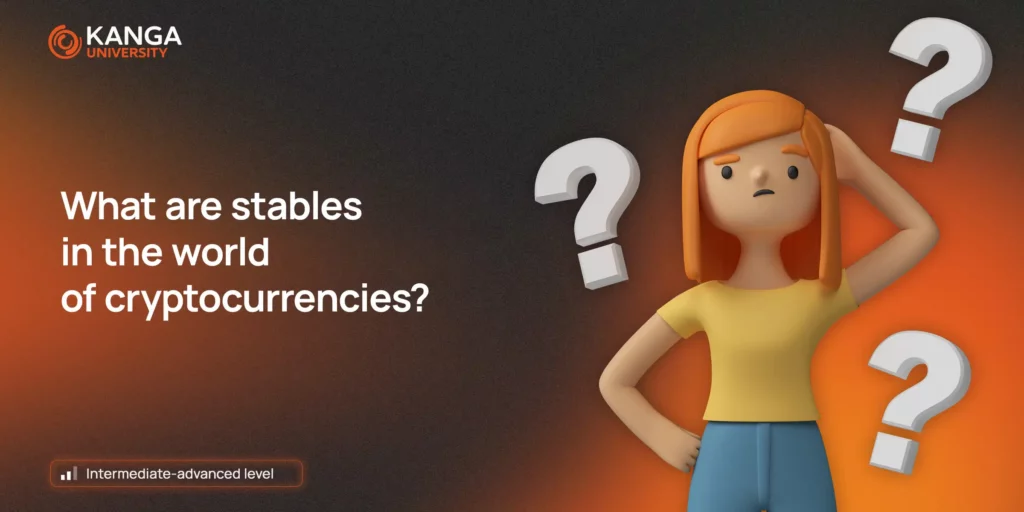
As a trader, you are well aware that one of the challenges we face daily in the world of cryptocurrencies is their fluctuating exchange rates. When the price of Bitcoin falls, it can significantly impact the purchasing power of stablecoins and make it challenging to pay for goods and services denominated in USD.
This volatility often leads traders to consider selling Bitcoin for USD during market downturns. Enter stablesats, a solution to this problem.
But who came up with the idea for stablesats? On August 3, 2022, a company called Galoy Inc. added a new feature to its platform – stablesats. These serve as an alternative to stablecoins or fiat bank integration.
In today’s lesson, we will explore this creation in detail, discussing what stablesats are and how they work.
Stablesats – Definition
Stablesats, as mentioned earlier, serve as an alternative to stablecoins or integrating with traditional banking systems. They utilize smart contracts to create a synthetic dollar backed by Bitcoin, effectively linked to USD. This enables users to maintain USD-equivalent accounts within Lightning wallets, addressing one of the most significant challenges faced by BTC users – short-term exchange rate volatility.
Interestingly, stablesats do not rely on stablecoins or tokens other than Bitcoin at their core. This unique approach results in improved interoperability and lower fees for users. Since stablesats do not require integration with banking systems, they can be brought to market relatively quickly.
What makes the new feature proposed by Galoy even more remarkable is its ability to allow Bitcoin wallet users to lock in a specific value of BTC to a specific dollar amount without being affected by volatility.
How do stablesats work?
The Galoy platform stabilizes BTC users through derivatives known as perpetual inverse swaps. These instruments enable investors to gain better exposure to the future value of Bitcoin by taking long or short positions on the asset. Unlike traditional futures contracts, perpetual inverse swaps have no expiration date, allowing contract holders to settle with the exchange at their convenience.
One of the dedicated wallets where stablesats can be used is the Bitcoin Beach Wallet. Users of this wallet can choose to store their Bitcoins in an account denominated in either BTC or USD.
If they opt for the latter, the Galoy platform transfers their sats to its partner exchange, opens a short position, and utilizes their BTC as collateral.
This short position effectively hedges the user’s BTC in dollar terms against any fluctuations in the price of Bitcoin. Any gain or loss on this contract offsets potential increases or decreases in the value of the security.
Why start using stablesats?
The primary motivation for using stablesats is their ability to address the price fluctuations associated with the Bitcoin economy. This is especially crucial when the price of BTC falls, making it challenging for holders to purchase USD-denominated products. Below, we examine the pros and cons of stablesats.
Pros:
- No Need for Banking Access: Stablesats solely rely on Bitcoin, eliminating the need for access to traditional banking systems.
- Low Fees: Stablesats operate with access to the Lightning Network, known for its virtually cost-free and immediate settlement capabilities.
- Full Collateralization: Each USD liability held by Galoy is backed by an equivalent amount in BTC, distinguishing stablesats from stablecoins.
Cons:
- Trust in Centralized Exchange: Users must trust the centralized exchange, similar to the trust placed in banks for traditional fiat currencies.
- Risk of Losing USD Access: In the unlikely event of bankruptcy by any of the involved institutions, clients could lose access to their USD.
- Automatic Leverage Reduction: Stablesats can automatically reduce leverage, which may leave the Galoy platform and its clients under-protected.
Interesting facts about the synthetic USD
Synthetic USD is not a new concept; it has been discussed and explored in the crypto space for some time. For instance:
- In 2015, Arthur Hayes discussed the creation, storage, and spending of synthetic assets, pioneering the topic.
- In 2021, a project called Standard Sats presented the idea of eurobitcoins.
- In early 2022, Kollider introduced the concept of synthetic stablecoins on the Lightning Network.
Now, stablesats have emerged as a practical solution for Lightning Network users seeking protection from volatility.
Summary
Stablesats offer more security than algorithmic stablecoins and are less susceptible to banking system movements. Importantly, the derivative contracts created for stablesats are fully collateralized by BTC, ensuring that each USD liability has an equivalent BTC backing.
As a stablesats holder, you don’t need to worry about the blockchain your counterparty is using; they are fully interoperable with anyone using BTC and the Lightning Network.
Complete today’s lesson!